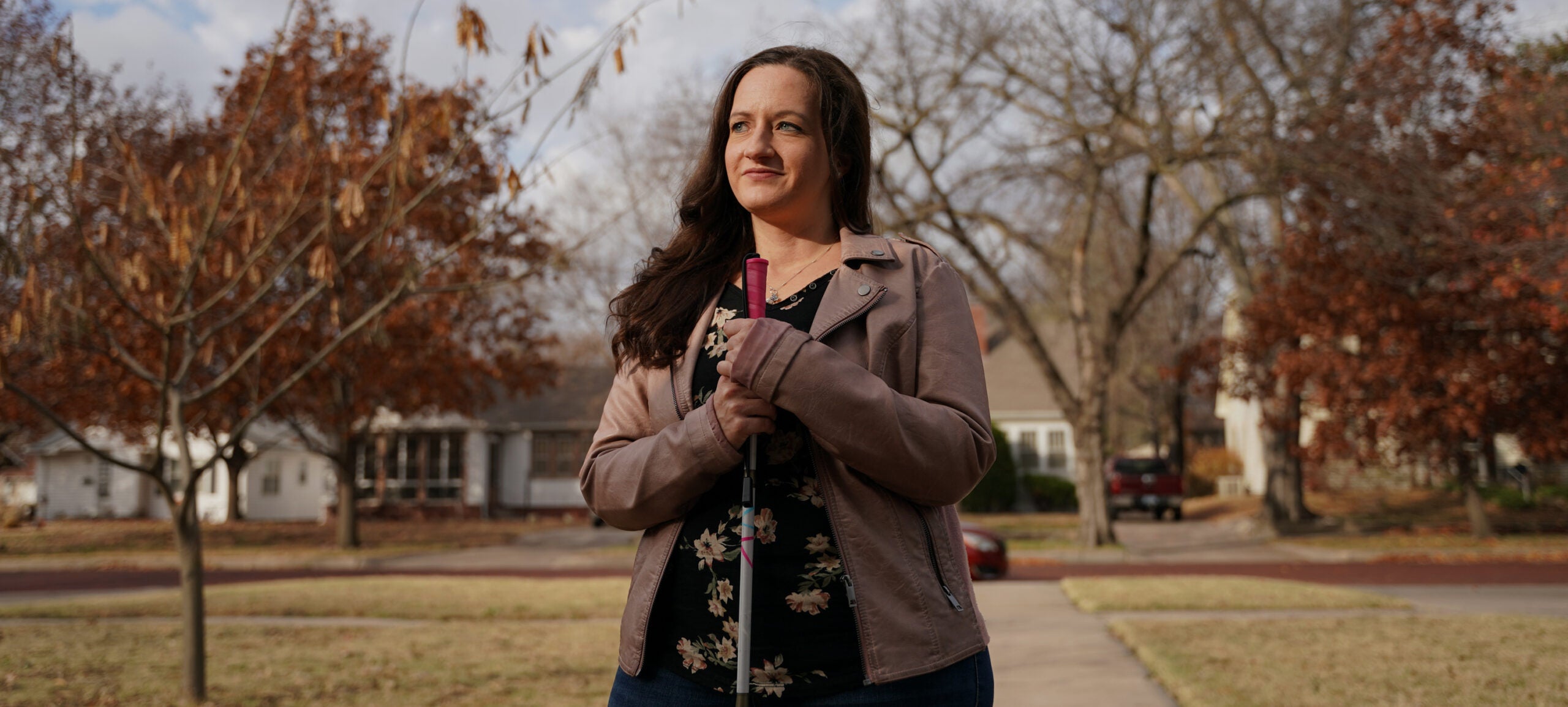According to the World Health Organization (WHO), there are an estimated
Despite this large number, accessibility still remains an issue, especially in the beauty industry. Make-up and beauty products are not marketed with blindness in mind, but that doesn’t stop people with visual impairments from using their beauty routines to express themselves.
Kelly
On her blindness
I have had to have many surgeries on my eyes because of retinal damage. My vision today continues to worsen. My central vision is completely gone.
Imagine there is a piece of wax paper in the center of your field of vision so whatever is directly in front of you seems to just disappear. This piece of wax paper seems to get a little bigger as time goes on, and more and more of my vision is affected.
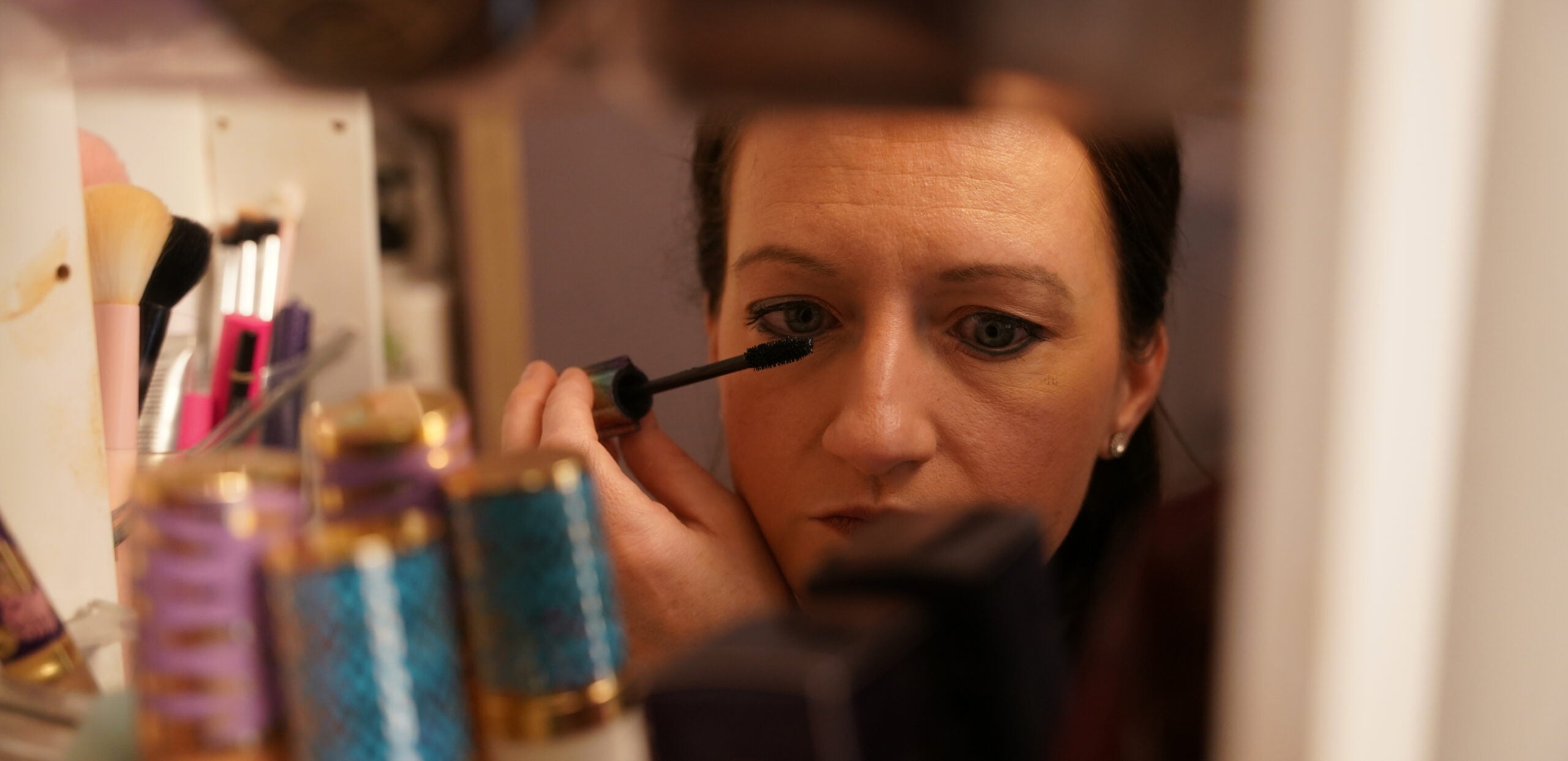
Kelly photographed by Christopher Smith
On her beauty routine
My mom is a cosmetologist, and we have always bonded over hair and make-up. My life has always had to be very routine-oriented due to my vision loss.
My routine is almost always the same every day, regardless of what the activities for the day are. I do my beauty routine in the same order every day so I don’t miss a step.
I can see my reflection in the mirror if I look above my reflection and to the right. I can use the lower left peripheral to “see” what I look like. I always have someone else look to make sure I [look okay]. If I’m home alone, I’ll snap a selfie and send it to a friend or my mom.
On beauty tips and tricks
Cosmetics are just not accessible. I have taught myself ways to make them work for me.
I use tactile markers to help me distinguish my products–there is no way for me to tell my eyeliner from my eyebrow pencil without them. I always mark the lid rather than the pencil so when I replace the product, I can just move the old lid to the new pencil.
I use my fingertips instead of brushes. Fingers work great for eyeshadow because I can feel where the different shades need to go. When you use your fingers you can get kind a map of where the natural contours of your face are.
My absolute favorite make-up brand is Tarte. Their products are kind to animals and the environment and to my sensitive skin. They have fun and creative packaging so it’s easy to feel the difference between all the products they offer. Everything smells amazing!
I can’t necessarily see the colors of the products, but when it smells like ice cream or coconut, or vanilla it gives me one more way to enjoy it!
On ingenious ideas
The biggest improvement that could be made would be to make the information about products more accessible to people with vision impairments. At the store, I can’t read any of the information on the bottle.
One time I came across a product that had a QR Code on the back. I went to snap a photo so I could zoom in on it, and my camera picked up the QR Code and a link popped up for the product website. How hard would it be for all brands to add a QR Code that would take you directly to that product’s info on their website?
Tracey
On her blindness
I have Usher’s Syndrome 3. My vision and hearing have gradually decreased as I have aged. My parents never told me I had a disability growing up. I thought what I saw was normal. I am now totally blind.
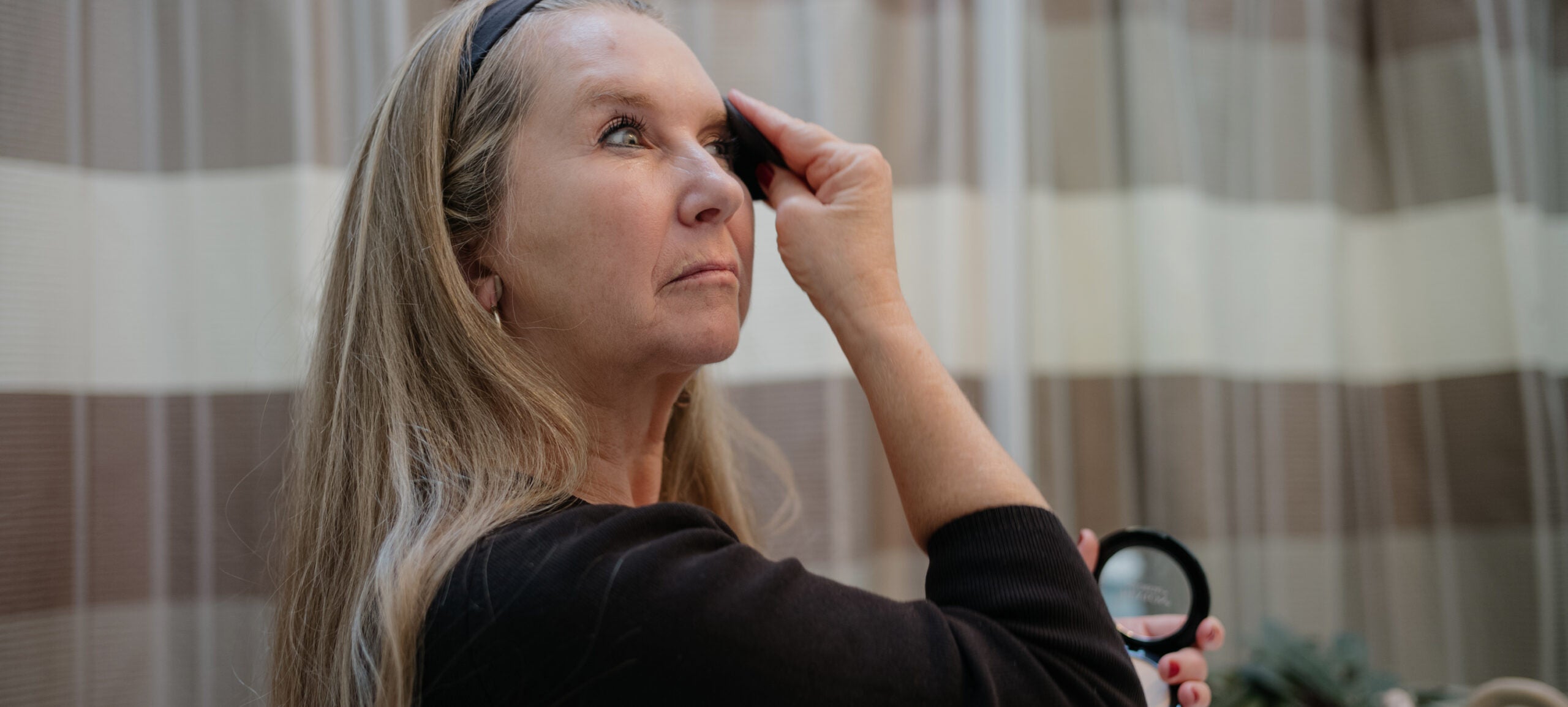
Tracey photographed by Adam Lerner
On her beauty routine
I match everything! My appearance is important to me–I don’t even go to the grocery store with just a ponytail. I like to look nice.
Before I go anywhere: make-up, hairstyle, fashion. I get my eyebrows done at a nail place. About four years ago, I got tattoo eyeliner.
I use Beautycounter. They’re all-natural with no chemicals. It’s really good for your skin. All-natural products are important to me.
On accessibility
I used to go to Sephora and the girl was fabulous with me. She explained to me my tone of skin and what color I should be wearing. People who are born blind may not understand colors.
[When I work at] Helen Keller International, I have to teach people what green is: feel the grass, feel the trees. Red would be like a burner on the stove. With a yellow, I would find a sunflower on campus and talk about how big it is, how it attracts attention.
It would be nice if companies included people without vision, but this is the reality of the world we live in. It’s up to you to succeed.
Abby
On her blindness
I have Optic Nerve Hypoplasia (ONH). It’s like having a bad TV signal–my eyes work but there’s a bad signal from my eyes to the brain.
I also has nystagmus (rapid movement of the eyes) and exotropia (outward turning of the eye) which are noticeable. I have usable vision, it is just not very clear. I have no peripheral vision.
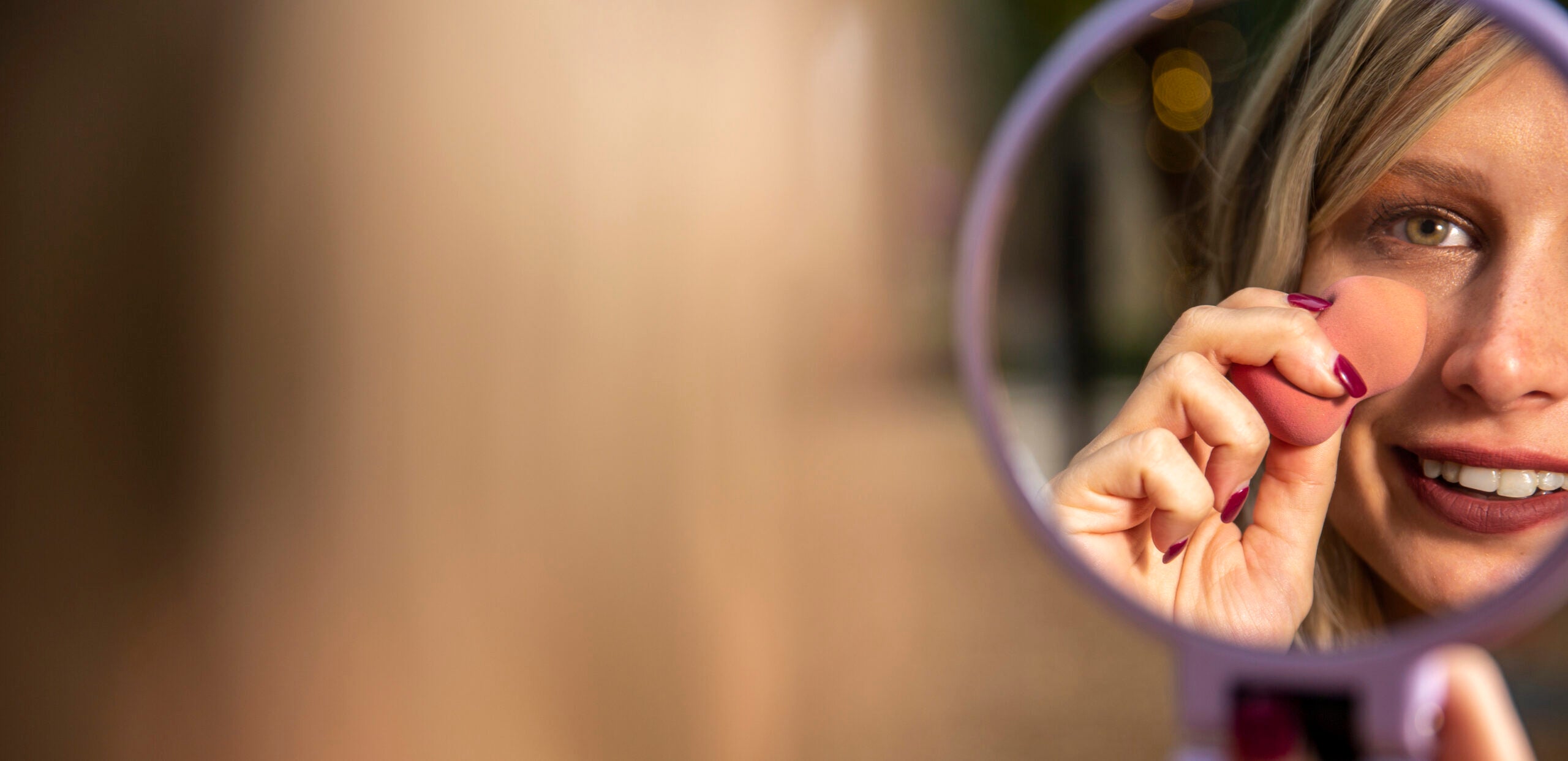
Abby photographed by Shannon Faulk
On obstacles and tips
I was always hesitant to get into beauty and make-up because I was afraid it would look bad. I struggle with the little details.
Towards the end of high school, I was around a bunch of friends that were into it and wanted to share tips. YouTube videos are very helpful, especially the ones that review quality. Quality is hard for me to tell sometimes.
One thing I’ve done is purchase a small, magnified mirror that is mounted to the wall and extends closer to my face. It’s small so I can keep my face close to it while moving my hand around it to do my eye make-up.
On community
Makeup is very fun, and it’s something that people are really involved with. It’s like a community. People are sharing their eye shadow and make-up and you have a talking point and shared interests.
If you shut yourself off to the products completely then you’re missing out on different experiences with people.
Kirby
On her blindness
I was born with optic nerve atrophy. I can see well enough to get around if it’s a familiar place. With my low vision, I can’t see far distances.
It’s difficult to notice people. I have to be pretty close to someone to recognize them, which can be a bit awkward.
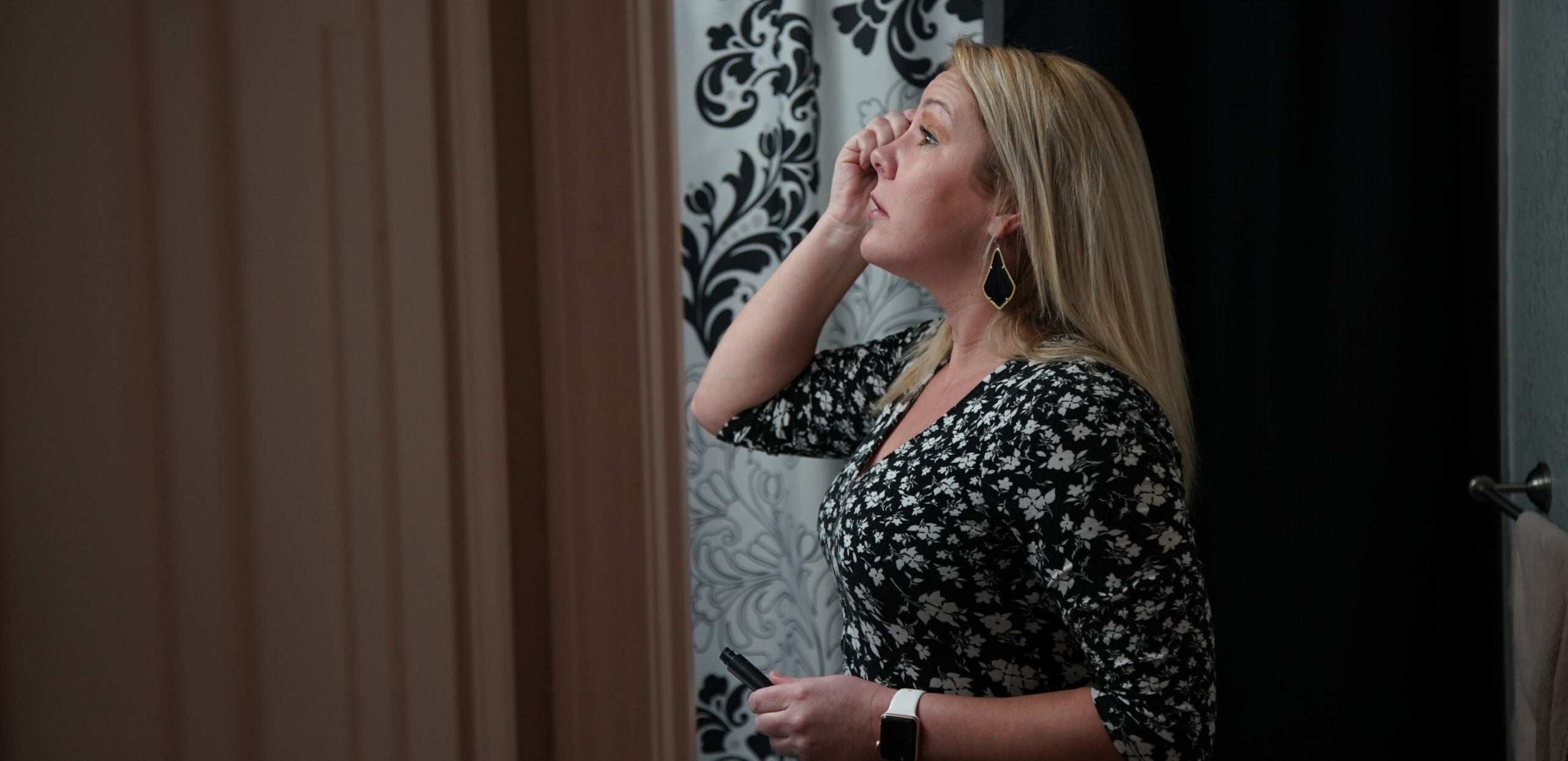
Kirby photographed by Christopher Smith
On simplicity
I keep my make-up routine as simple as possible. I use tinted moisturizer instead of foundation, because it’s too noticeable if foundation doesn’t get blended in well. I use a little bit of blush. I recently got permanent eyeliner and it’s the best thing I’ve ever done! I can use mascara without a mirror, so I do a light layer of that.
I’m very into fashion though I can have a hard time with dark colors: blues, blacks, browns. I often have to send pics to my friends asking if something looks ok together or what color something is
On shopping
When I go to purchase new make-up I inform the person helping me that I’m visually impaired.
I need to know which brushes to use, how many times I put it into the container, and how many times to brush on my face. They’re always very sweet and helpful.
Mikah
On their blindness
I have Retinitis pigmentosa, which means my retinas deteriorate. I see in tunnel vision. I have no peripheral vision.
I can still see some color, but I get them mixed up sometimes. I can see red best. I can see lights and shapes and things with high contrast. I can’t see facial features or expressions.
On being trans-nonbinary
I consider myself transgender because I’m not fully man or woman. I would say trans-nonbinary. It’s still a journey that I’m still trying to put words to it.
A lot of transgender people talk about not recognizing themselves in mirrors, but since I haven’t been able to see myself in a mirror since I was six years old, I don’t really relate.
I can’t copy what people wear because I can only see what color not the style. I have to ask people to explain very specifically and in detail. I have to rely on what people think looks good.
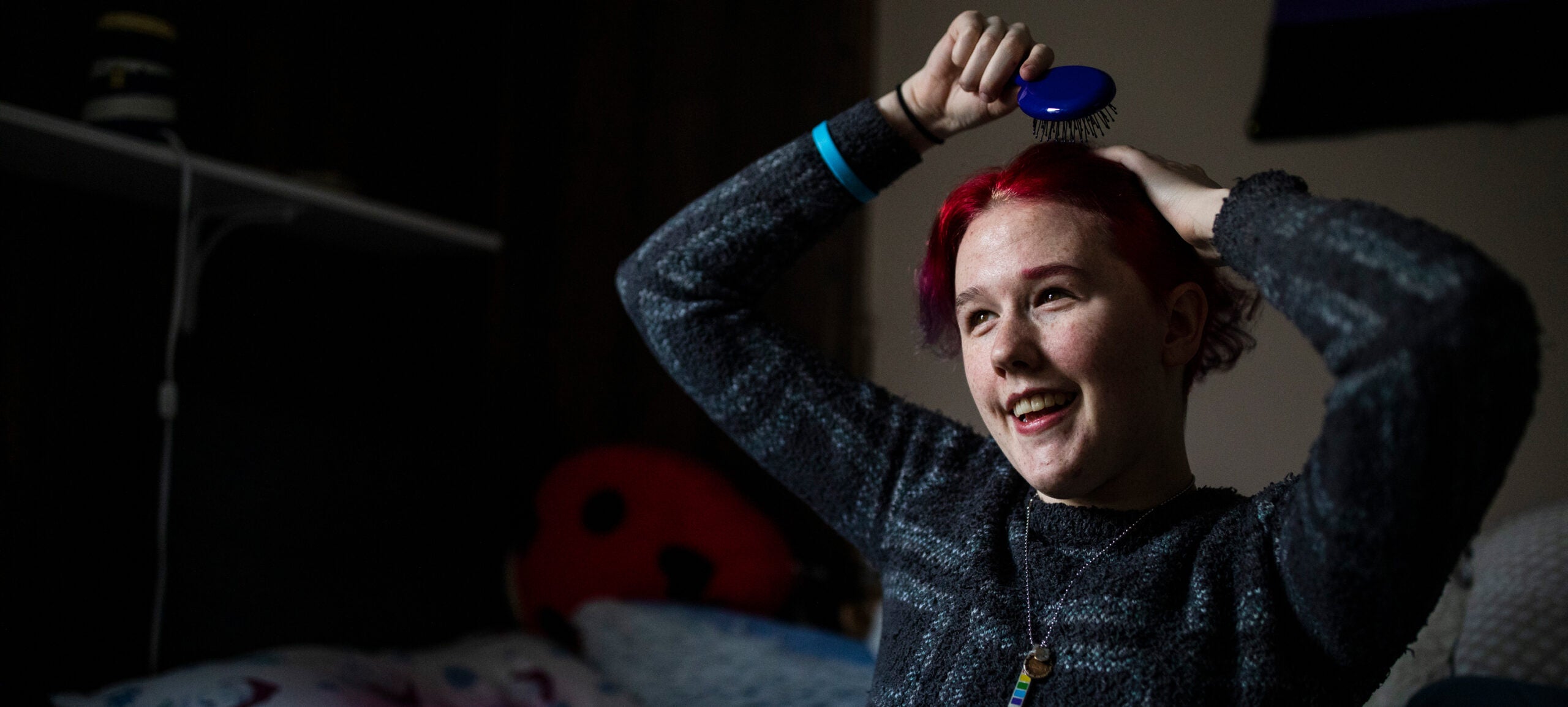
Mikah photographed by Maddie McGarvey
On representation
I think having a lot of different representations can be good. A lot of models from what I’ve heard tend to be one type of person or a very narrow range and that’s not the way people are.
Humans are diverse and there’s beauty in diversity. I think people deserve to see themselves represented–that they’re included and seen and they matter.
Even though I don’t use a lot of beauty products, I think it’s good to have a spectrum of people’s opinion, from people who use it all the time to people who use it very little. It’s okay to not use much and still have a voice.
Takeaway
Make-up can seem like a strictly visual endeavor: one filled with subtle nuances in colors and shades. This doesn’t stop those without vision from finding joy in the feel of the textures and the different smells of the products.
Millions of people with visual impairments have been accessing these products for years, and beauty companies are starting to catch up.
Companies like the UK brand Grace and Priceline Pharmacy have started marketing their products to be more inclusive towards those with visual impairments and other disabilities.
People with visual impairments have not let their vision impact their ability to access the beauty industry. Adapting techniques and practicing the skills keeps make-up accessible for those with vision loss.
Whitney Sandoval is a freelance writer living with her family in the Midwest. She writes about parenting, infertility, and pregnancy, with bylines in What To Expect, The Kitchn, and What’s Up Moms. Along with hiding from her family, Whitney’s hobbies include running, yoga, and drinking lattes.
